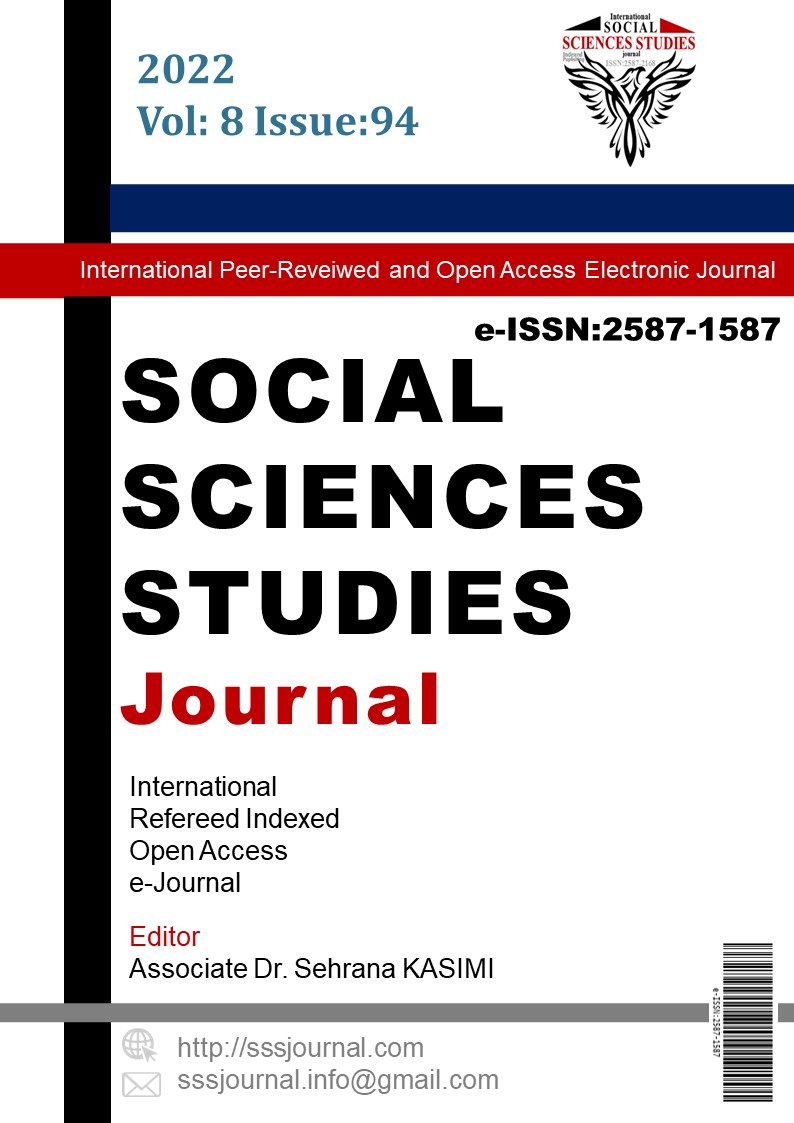Author :
Abstract
2018 yılında yürürlüğe giren UFRS 9 Finansal Araçlar Standardında yer alan değer düşüklüğü modeli, UMS 39’da yer alan gerçekleşen zararlar modeli yerine, beklenen kredi zararı modelini esas almaktadır. Bu modele göre işletmeler, gerçeğe uygun değer farkını kar veya zarara yansıtarak ölçülen finansal varlıklar dışındaki tüm finansal varlıkları için temerrüt olasılığını tahmin etmeli ve bu tahmine göre hesaplanan değer düşüklüğü karşılığını finansal tablolara yansıtmalıdır. Temerrüt olasılığı, piyasadan elde edilen bilgilerden veya geçmiş yılda elde edilen verilerden tahmin edilebilmektedir. Ancak, işletmeler karşı tarafla ilgili piyasa veya tarihsel bilgilere sahip olmayabilir. Bu durum temerrüt olasılığını tahmin etmeyi zorlaştırmaktadır. Bu çalışma kapsamında, piyasa bilgileri mevcut olmayan işletmelerin temerrüt oranını tahmin etmek için bir model geliştirilmiş, daha sonra bu model bir üretim işletmesine uygulanmış ve sonuçlar yorumlanmıştır.
Keywords
Abstract
The impairment model included in recently enacted IFRS 9 Financial Instruments Standard is based on “expected losses model” instead of “incurred losses model” exists in The IAS 39 Impairment Model. According to this model, enterprises should estimate probability of default for all financial assets except financial assets measured at fair value through profit or loss. Due to this estimation, enterprises should reflect calculated provision for impairment to the financial statements. Probability of default can be estimated information obtained from the market or previous year data. However, enterprises may not have market or historical information about the counterparty, which makes it difficult to estimate the probability of default. Within the scope of this study, a model has been developed to predict the default rate of enterprises for which market information is not available, then this model has been applied to a manufacturing enterprise and the results were interpreted
Keywords
- Altman, E. I. (1968). Financial ratios, discriminant analysis and the prediction of corporate bankruptcy. The journal
- Altman, E. I. (1968). Financial ratios, discriminant analysis and the prediction of corporate bankruptcy. The journal of finance, 23(4), 589-609..
- Altman Edward, I., Haldeman Robert, G., & Narayanan, P. (1977). Zeta analysis: A new model to identify bankruptcy risk of corporations. Journal of Banking and Finance, 10, 29-54..
- Black, F., & Scholes, M. (2019). The pricing of options and corporate liabilities. In World Scientific Reference onContingent Claims Analysis in Corporate Finance: Volume 1: Foundations of CCA and Equity Valuation (pp. 3- 21).
- Cappon, A., Gorenstein, A., Mignot, S., & Manuel, G. (2018). Credit ratings, default probabilities, and logarithms. The Journal of Structured Finance, 24(1), 39-49.
- Creal, D. D., Gramacy, R. B., & Tsay, R. S. (2014). “Market-based Credit Ratings”. Journal of Business and Economic Statistics, 32 (3), 430-444.
- Duan, J.C., Kim, B., Kim, W., Shin, D. (2018). “Default Probabilities of Privately Held Firms”. Journal of Banking and Finance, 94, 235- 250.
- Duffee, G.R. (1999). “Estimating the Price of Default Risk”. The Review of Financial Studies, 12 (1), 197-226. Ederington, L.H. (1985). Classification Models and Bond Ratings. Financial Review, 20 (4), 237-262.
- Fazzini, M. (2018). Business Valuation. Theory and Practice. Palgrave Macmillan.
- Holt, O., McCarroll, J. (2015). IFRS 9 not just for banks, you know, Accountancy Ireland, 47 (3), 18-20.Ivanovic, Z., Bogdan, S., & Baresa, S. (2015). Modeling and Estimating Shadow Sovereign Ratings. Contemporary Economics, 9 (3), 367-384.
- Jiang, Y. (2018). Semiparametric Estimation of a Credit Rating Model. SSRN electronic journal.
- Longstaff, F., Schwartz, E.S. (1995). “A Simple Approach to Valuing Risky Fixed and Floating Rate Debt”. Journal of Finance, 50(3), 789-819.
- Merton, R.C. (1974). On the Pricing of Corporate Debt: The Risk Structure of Interest Rates. The Journal of Finance, 29 (2), 449-470.
- Moody’s (2017b). Moody’s Financial Metrics Key Ratios by Rating and Industry for Global Non-Financial Corporates: December 2016.
- Tsay, R.S., Zhu, H. (2017). Market-Based Credit Rating and Its Applications. Chapter 7 of Applied Quantitative Finance. Springer. Germany. ISBN 978-3-662-54485-3.
- Tascón, M. T., & Castaño, F. J. (2012). Variables y modelos para la identificación y predicción del fracasoempresarial: revisión de la investigación empírica reciente (Variables and Models for the Identification andPrediction of Business Failure: Revision of Recent Empirical Research Advances). Revista de Contabilidad/Spanish Accounting Review, 15, 7-58.





